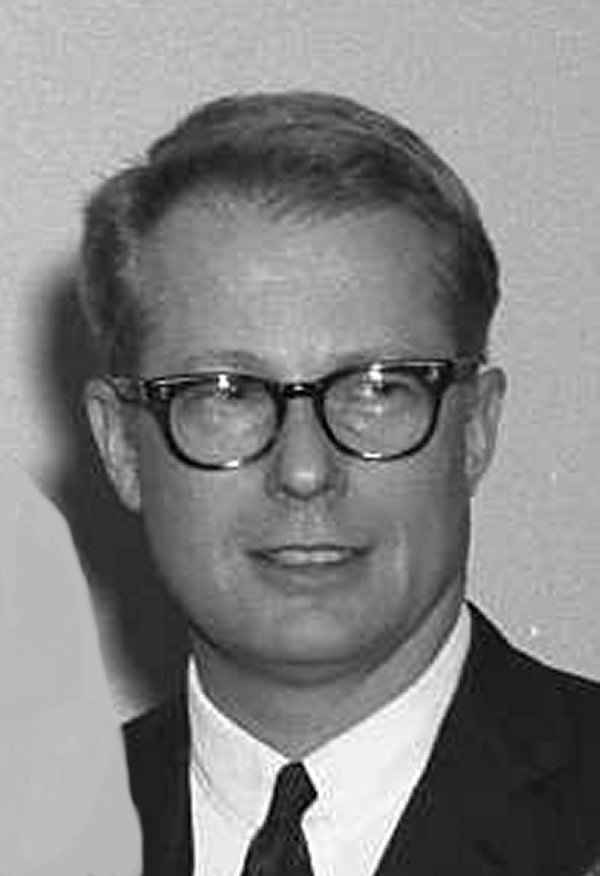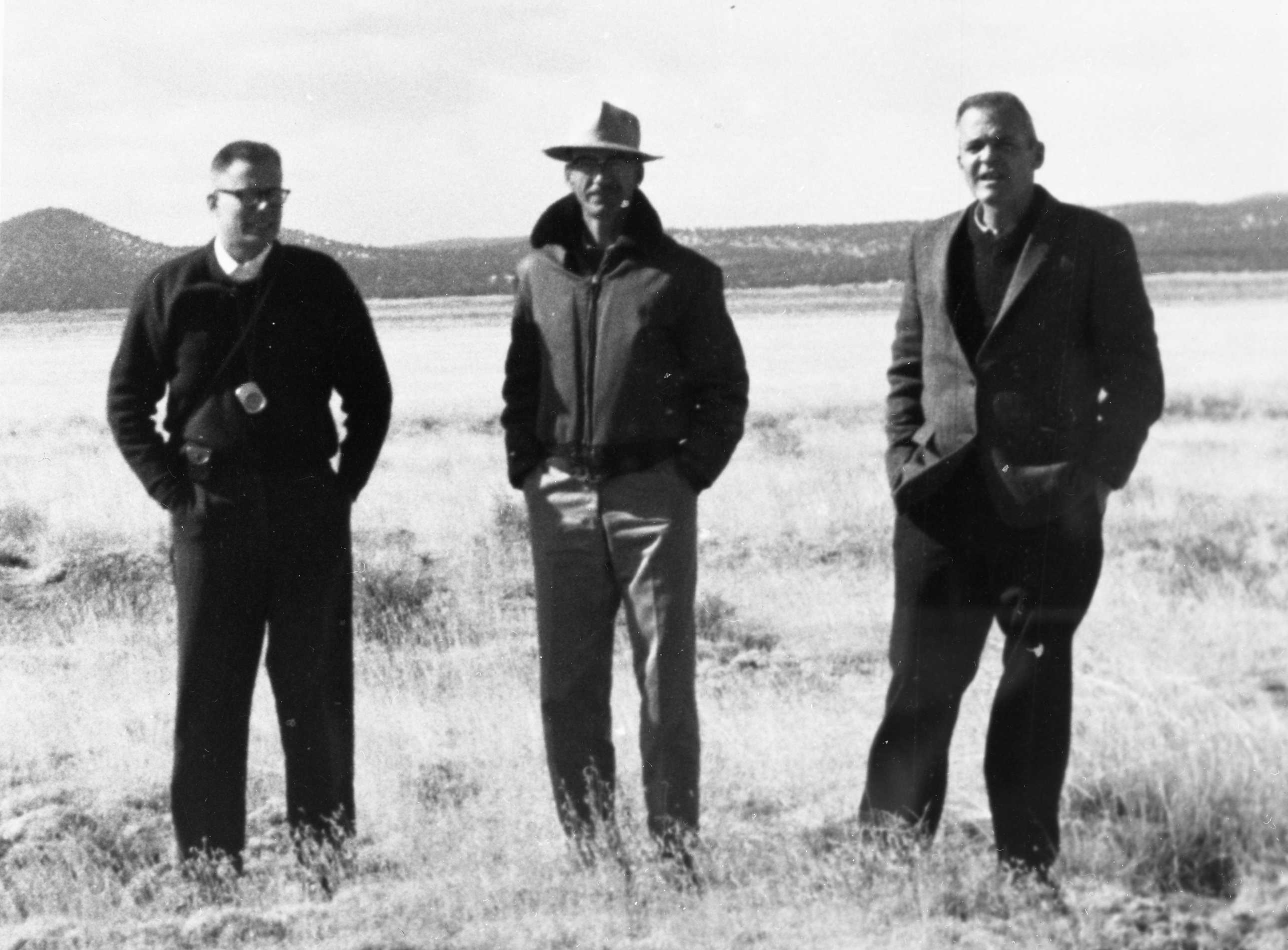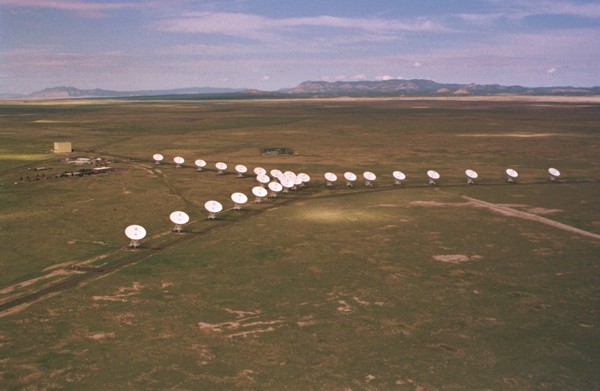Finding Aid to the Papers of Campbell M. Wade, 1955-2015.
   |
|
See also the transcript of the May 1978 interview (55 minutes) of Wade in the Papers of Woodruff T. Sullivan III, the transcript of the December 2003 interview (131 minutes) by Robyn Harrison, and the transcript of the March 2015 interview (124 minutes) by K.I. Kellermann. Contents:
Location of collection: National Radio Astronomy Observatory, Archives, 520 Edgemont Rd., Charlottesville, VA. Phone: 1-434-296-0203, email: archivist at nrao.edu. Title and dates of the collection: Papers of Campbell M. Wade, 1955-2015 Size of the collection: 0.5 linear feet Papers/Records created by: Wade, Campbell M. (1930-2024) Short description of collection: The small collection includes notes and papers from Wade’s years at NRAO, as well as photographs, some from NRAO, but primarily from Wade’s postdoctoral appointment at CSIRO in the late 1950s.
Biography: Campbell (Cam) Marion Wade was born in 1930 in Elizabeth Town, Kentucky. He received both his undergraduate and graduate education at Harvard University where he helped to develop the burgeoning radio astronomy program led by Bart Bok and H.I. (Doc) Ewen. His undergraduate studies were interrupted, however, by two years in the 452nd Army Field Artillery Battalion. After completing his PhD dissertation on A 21-cm study of Expanding H II Regions, Wade spent two years on a postdoctoral appointment at the Australian Scientific and Industrial Research Organization Radiophysics Laboratory. While at CSIRO, he used data from the 85 MHz Mills Cross to demonstrate for the first time the double lobe structure of the large extended feature of the radio galaxy Centaurus A (NGC 5128). In 1960 Wade joined the NRAO scientific staff in Green Bank as an Assistant Scientist where he made an immediate impact. Using the then new Tatel 85 foot radio telescope, he was the first to note the presence of a second radio galaxy, M84, in the Virgo Cluster and then showed the double nature of the radio galaxy Fornax A (NGC 1316), thus demonstrating the ubiquity of double lobed radio galaxies. Teaming up with NRAO Director David Heeschen, Wade used the new 300 foot radio telescope to study the radio emission from 88 bright galaxies in the Shapley-Ames catalogue. Again, using the 300 foot telescope, together with Heeschen and Ivan Pauliny-Toth, their catalogue of accurate positions and flux densities for radio sources found in the Cambridge 3CR catalogue became a standard reference for years. Using the Green Bank Interferometer Wade discovered the fine structure in Cygnus A, and together with Barry Clark and David Hogg, he did precision absolute astrometry on compact radio sources leading to the identification of new quasars. Mostly working with Robert Hjellming, he made the first detections of true radio stars, and together with Hjellming and Kenneth Kellermann discovered the compact radio component coincident with the nucleus of NGC 5128. Wade played a major role in the development of the Green Bank Interferometer, then took the lead in the early planning of the VLA. He led the study of 34 potential sites for the VLA (using his prized Finnish surveyor's compass), and later evaluated the siting of the ten VLBA antennas. In 1966 Wade moved to the new NRAO headquarters in Charlottesville, Virginia, and in 1978, he moved to Socorro where he could take a more direct role in commissioning the VLA; when the VLA was nearly completed, in December 1978, he became the first director of VLA operations. He retired from NRAO in 1993. He was a member of the American Astronomical Society and the International Astronomical Union. Wade died in 2024 in Albuquerque, New Mexico. [Biographical note written by Kenneth I. Kellermann with contributions from Ellen Bouton, Barry Clark, and others.] Accession history: Material was donated to the NRAO/AUI Archives by Wade’s son in summer 2024 after Wade’s death. Access to collection: No restrictions; contact the Archivist for appointment. Restrictions on use of collection: None. Publication rights: Copyright has been assigned to the NRAO/AUI Archives. All requests for permission to publish or quote from manuscripts must be submitted in writing to the Archivist. The NRAO/AUI Archives does not have rights to the photographs from Australia. Preferred citation: National Radio Astronomy Observatory/Associated Universities, Inc. Archives, Papers of Campbell M. Wade, <series/unit/>. After the initial citation, abbreviations may be used: NRAO/AUI Archives, Wade Papers, <series/unit/>. Processing notes: Arrangement, description, and processing of the material was done by Ellen N. Bouton in 2024. During the processing, fasteners were removed, and materials were removed from binders of various types. Notes and Papers Series: This series includes notes, memos, and research notebooks dated 1955-1977. Click here for an item listing Size: 16 folders.
Photographs Series: Includes photographs taken by Wade and others. Approximate dates: mid-1950s-late 1960s, with two photos from 2015. Click here for a folder listing and links to scanned images. |
